Encouraging positive reading habits: A school librarian's guide to sparking a love of reading in 2025
As students get back into the swing of school life after the long festive break, it’s the job of school educators to make sure that reading doesn’t fall to the bottom of their priority list.
As this is the time to set new year’s resolutions, let’s encourage our students to form more positive reading habits in 2025 and spend more time making use of their school library.
Read on to find some practical tips to help you transform your library experience and nurture a reading culture in 2025.

Kickstart the year with trying something new
Book tasting events
As the new academic year begins, start by hosting book tasting events to ignite curiosity and excitement about reading and the idea of trying something new. If a student prefers a particular genre or author, use these events to inspire them to explore something else – they may just find a book they love. A book tasting event offers themed sampling sessions where students can explore various genres and authors in a fun, social setting, and hear from their peers about what they love. Set up quick-read stations with book previews around the library and encourage students to come along at lunch time to explore more. Appoint some of your school librarian helpers to stand at each station and share their recommendations with peers. This peer-to-peer interaction not only broadens their literary horizons but also, creates a discussion around reading and fosters a real sense of community.

Book passports
A simple way to encourage students to try as many different types of books as possible is to create a simple book genre passport where students collect stamps for each genre or new author they read. This engaging activity makes the reading experience more dynamic and motivates students to diversify their reading habits and step out of their comfort zones. If students aren’t sure what to read in a particular genre, why not get them to use the search tools on Reading Cloud to discover new books quickly. The picture search and the random theme selector offer a fun way for students to find their next read. Even if they don’t enjoy every book, it’s an excellent starting point for discussions about what they do like and helps them to refine their reading tastes.

Creating an inclusive library space
Bring in student artwork
Transform the school library into an inclusive space where every student feels welcome and inspired. One good idea to make the library feel more student oriented is to display student artwork and book recommendations to create a visually stimulating environment that celebrates diverse voices and perspectives. Encourage your student library helpers to create an interactive display on their favourite genre or author and give them free reign to get creative when it comes to building the display. You could even do a small competition where students vote on the best library displays. Bringing student artwork into the classroom will draw lots of attention and students who may not usually come into the library might be tempted to come in just to see the artwork – will they be persuaded to pick up a book on their way out?
Create a cosy space
The library should be a comfortable space where students can explore the library catalogue at their own pace. While many use the library for quiet study and group projects so desks and tables are required, is there any space where you can create a more reading nook with comfortable seating and some cushions? Creating a different kind of space, more oriented around student wellbeing, within the library can help make it a favourite hangout spot, encouraging students to spend more time immersed in books.
Offer access to various resource types
Ensure that the library is accessible to all students, including those with disabilities and incorporate multimedia resources like ebooks and audiobooks to cater to different learning styles and inspire those who don’t like traditional print resources. Did you know Reading Cloud partners with OverDrive ebooks? And Reading Cloud students can get access to over 70,000 classic ebook titles via the new Project Gutenberg integration for free! By creating a supportive and engaging environment with a variety of resource types, librarians can make reading a pleasurable and inclusive activity for every student.
Personalised reading lists to spark interest
Personalised reading lists can be a game-changer in fostering a love for reading. By tailoring book recommendations to individual students’ interests and reading levels, librarians can use their expertise to make reading more relevant and enjoyable, helping to broaden students’ reading tastes. Personalised reading lists show students that their interests are valued, making them more likely to engage with the material. Reading Cloud offers the functionality for educators to easily curate reading lists for groups of students and individual students, and students can create their own lists, helping to build independent reading.
If you haven’t used the reading list feature before, why not start small by creating a 2025 must-reads list for students and incentivise reading with end-of-term prizes or stickers. Once students get hooked on reading from your recommended reading list, you can always reach out to them about creating something personalised to their needs. Readings lists not only motivate students to read more but also give their reading journey structure and a sense of achievement on completing it.


Empower students to share their thoughts
Encourage students to express their opinions about the books they read through reviews and blogs. Peer-to-peer recommendation on books is one of the best ways to nurture a real sense of a reading community where everyone’s voice is valued. Not sure where to start? Reading Cloud library management system facilitates this with its book reviews and blogs features, which provide prompt questions to guide students’ writing. Sharing reviews helps students develop key critical thinking and communication skills as well as fostering a reading culture where everyone learns from each other’s insights.
And how about take this one step further. Why not host book review sessions where students can present their thoughts on their favourite books and authors to their peers. This not only builds confidence in public speaking and presentation skills, but also creates a platform for meaningful discussions about literature. Empowering students to share their thoughts makes reading a more interactive and reflective practice.
Utilising reporting tools for better engagement
Leverage reporting tools to gain insights into students’ reading habits and preferences is key to enhancing the library experience and ensuring your catalogue is meeting the needs of your students. Every school library and cohort of students is different. Reading Cloud offers a comprehensive reporting and analytics interface which allows you to pull reports on reading trends across different age groups, levels, and genders, plus which books in your catalogue are the most or least read. By understanding these key reading, you’ll be able to curate a more relevant and engaging collection, and you can use this data to identify areas for improvement to align with the evolving needs of your students. By mapping the library’s offering with students’ interests, you can make reading a more appealing and engaging activity, ultimately nurturing lifelong positive reading habits.
Conclusion
With these simple initiatives you can make a great start to the year, helping to inspire new students to get into reading and advance the reading journey of avid readers, helping to foster strong reading habits for 2025.
Ready to transform your school library?
Don’t miss out on the opportunity to elevate your students’ library experience. If you’re not yet part of the Reading Cloud family, now is the perfect time to find out more about what we can offer your school. Book a no obligation demo with one of our expert Sales team today and discover how Reading Cloud can transform your school library.

